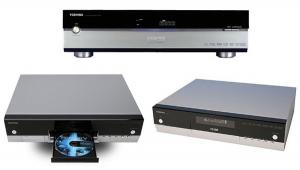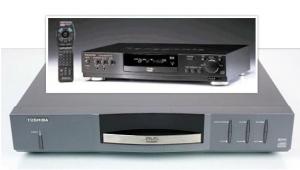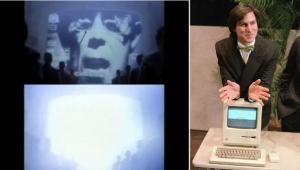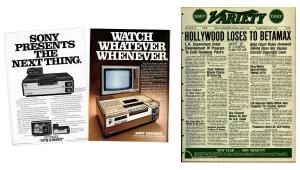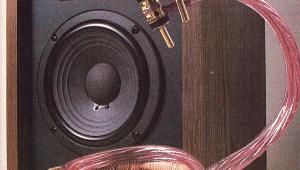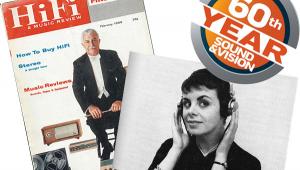Flashback 1999: World’s Biggest TV!
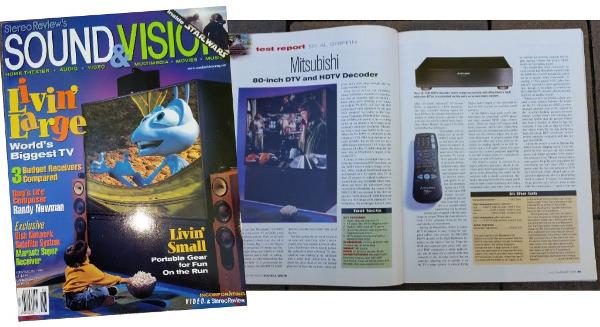
At $10,000, the Mitsubishi VS-80803 was also enormously expensive and required the use of a $3,000 outboard decoder. Add to that a screen with a then-standard 4:3 aspect ratio! Hello zoom. Hello black bars.
Addressing the set’s squarish 4:3 screen, reviewer Al Griffin wrote:
I know what you’re thinking: a 4:3 screen on a digital (DTV) set? Isn’t the 16:9 widescreen format mandated by the new DTV standard? According to the Consumer Electronics Manufacturer’s Association (CEMA), the answer is no — as long as the set can display a 16:9 image at the standard’s minimum resolution. Mitsubishi went several steps further in this case. When the VS-80803 is connected to the company’s HD-1080 high-definition decoder ($3,000), the set can still put up a 1080i-format letterboxed 16:9 image that measures a healthy 73 inches diagonal…”The TV was so big that Griffin joked he was about to “leave the set in its carton and score out a hole large enough that we could view the screen.”
So, how’d it perform?
Griffin was blown away by the quality of the high-definition broadcast of CBS’s 48 Hours. “I was startled at how lifelike the show looked,” he wrote noting that it was considerably more detailed than the programs stored on the Sencore HDTV player S&V reviewers routinely used in those early days of HDTV when high-def programming was scarce. “The quality didn’t quite equal that of a $35,000 front-projection system I’d recently brushed against, but it was still very satisfying. Details such as skin textures or the ornate patterns of fixtures in the Trump Towers suite from which Dan Rather was hosting the show were extremely realistic looking.”


